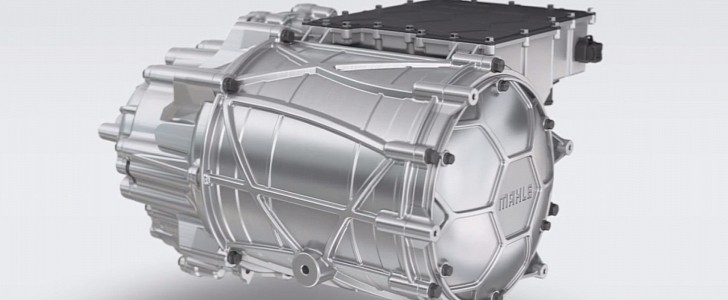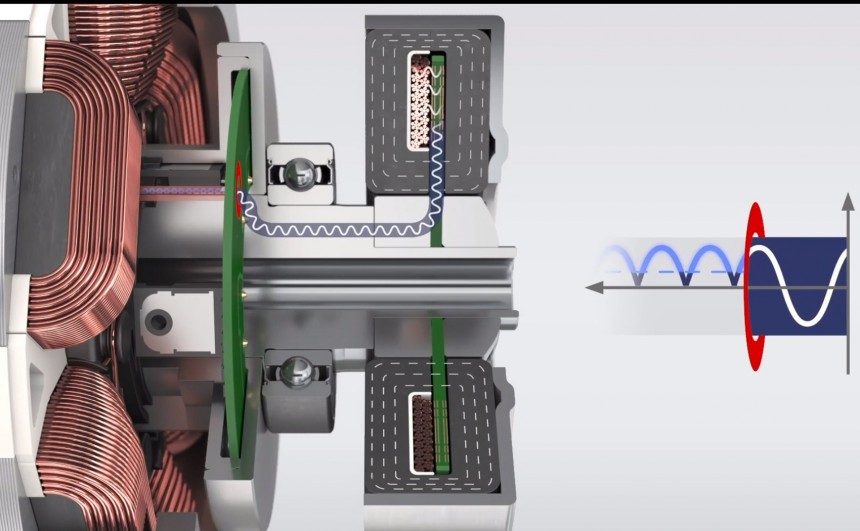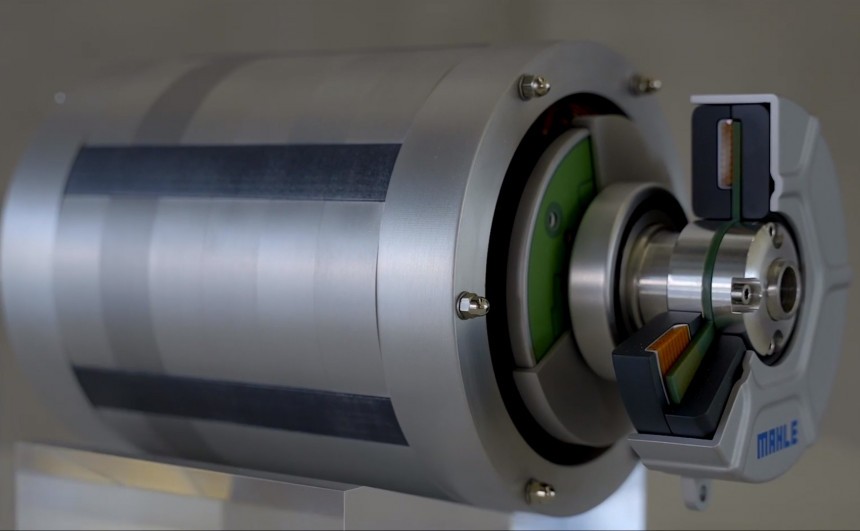The leading German tech giants over at Mahle have developed an electric motor that doesn’t use permanent magnets. It has the potential of powering a wide range of vehicles, it’s highly efficient, and it can be manufactured without using rare earth minerals.
With ICEs in the rearview mirror, the automotive industry is accelerating the development of electric powertrains, and Mahle is one of the companies that concentrate a large part of their resources to improve current technologies.
It may not be the first manufacturer to develop one, but the new magnet-free motor Mahle has created is the first of its kind that employs a scalable construction which means it can be used to power many sizes of vehicles, from small passenger cars to bigger commercial vehicles.
It works by generating the required magnetic field using excitation copper coils located inside the rotor that replace conventionally used permanent magnets. The power is transmitted wirelessly, contact-free, and consequently wear-free.
The key part of the assembly is a wireless transmitter that uses an alternating field to send energy to the rotor. This field is then converted into direct current for the aforementioned coils, producing an additional magnetic field that enables the motor to generate torque.
According to Mahle, the ability to adjust the parameters of the rotor’s magnetism instead of being limited by the use of traditional magnets has led to maximum performance through the full range of operating speeds. It’s thus capable of achieving an efficiency above 96%, something that only Formula E powertrains can currently offer.
This highly efficient electric motor can become a cure for range anxiety since vehicles equipped with it will be able to cover more ground on a full charge. The company says it will supply it at a relatively low cost, which could mean cheaper EVs.
As we all know, electric motors are extremely reliable because of the minimal moving parts involved. Because it operates contact-free, so there’s practically no mechanical wear, Mahle’s pioneering version is set to be even more dependable. However, if it needs servicing, the motor is designed to be taken apart and put back together with ease.
Another benefit of this powerplant that is heavily emphasized is the fact that it reduces the environmental impact of mining for rare-earth materials. The permanent magnets used in most of the current motors available on the market are made from minerals such as neodymium, dysprosium, or yttrium. Without the use of those pesky magnets, there is no need to source these materials.
In my opinion, the fact that the vast majority of known deposits are located in China is another reason why many automakers are looking for alternative technologies. In 2011, the Asian country restricted the exports of these materials. As a result, prices for neodymium rose by approximately 750% while dysprosium became 2,000% more expensive, according to greencarcongress.com.
Mahle has already shipped prototypes to several automakers for testing and evaluation and anticipates mass production will commence by the end of 2023.
Although not completely new, this magnet-free motor incorporates innovative technologies that have the potential to revolutionize the industry. It shows that small improvements can accelerate the already fast-paced development of electric vehicles.
It may not be the first manufacturer to develop one, but the new magnet-free motor Mahle has created is the first of its kind that employs a scalable construction which means it can be used to power many sizes of vehicles, from small passenger cars to bigger commercial vehicles.
It works by generating the required magnetic field using excitation copper coils located inside the rotor that replace conventionally used permanent magnets. The power is transmitted wirelessly, contact-free, and consequently wear-free.
According to Mahle, the ability to adjust the parameters of the rotor’s magnetism instead of being limited by the use of traditional magnets has led to maximum performance through the full range of operating speeds. It’s thus capable of achieving an efficiency above 96%, something that only Formula E powertrains can currently offer.
This highly efficient electric motor can become a cure for range anxiety since vehicles equipped with it will be able to cover more ground on a full charge. The company says it will supply it at a relatively low cost, which could mean cheaper EVs.
As we all know, electric motors are extremely reliable because of the minimal moving parts involved. Because it operates contact-free, so there’s practically no mechanical wear, Mahle’s pioneering version is set to be even more dependable. However, if it needs servicing, the motor is designed to be taken apart and put back together with ease.
In my opinion, the fact that the vast majority of known deposits are located in China is another reason why many automakers are looking for alternative technologies. In 2011, the Asian country restricted the exports of these materials. As a result, prices for neodymium rose by approximately 750% while dysprosium became 2,000% more expensive, according to greencarcongress.com.
Mahle has already shipped prototypes to several automakers for testing and evaluation and anticipates mass production will commence by the end of 2023.
Although not completely new, this magnet-free motor incorporates innovative technologies that have the potential to revolutionize the industry. It shows that small improvements can accelerate the already fast-paced development of electric vehicles.









